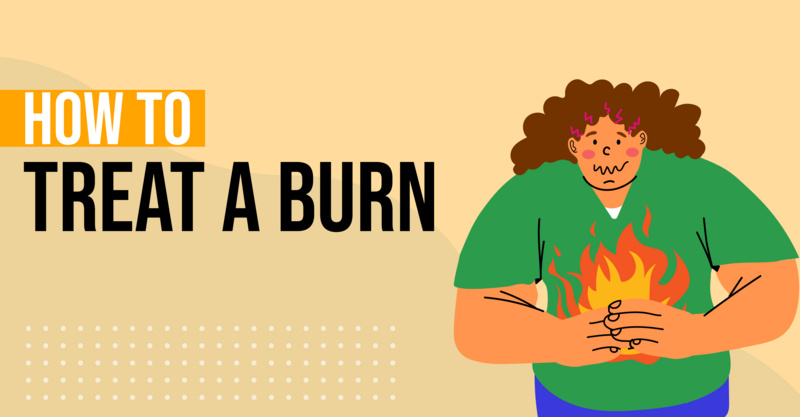Key Points
- Urgent care centers are ideal for treating non-life-threatening injuries such as minor burns, minor cuts and scrapes, fractured or broken bones (except when the bone has pierced the skin or if the neck or back may be broken), dislocated joints, sprains and strains, mild to moderate dehydration, possible concussions (if the person has not lost consciousness), and swallowed objects (if the person is not having trouble breathing).
- Some common treatments for physical injuries at urgent care centers include x-rays, stitches, cleaning and applying antibiotic cream to minor burns and cuts, setting and casting broken or fractured bones, advising the RICE method for minor dislocated joints, and treating mild to moderate dehydration.
- If the injury or condition is life-threatening, it's best to go to the ER. Signs that you should go to the ER include pain or pressure in your chest, difficulty breathing, severe abdominal pain, altered mental states, uncontrolled bleeding, sudden numbness, loss of consciousness, poisoning, and severe headaches.
- Urgent care centers are a great choice for non-emergency, non-life-threatening medical conditions that can't wait. If unsure about whether to go to urgent care, it's advised to call a center near you.
- Using platforms like Solv can help you make a same-day urgent care appointment, allowing you to receive last-minute, quality care without the wait.
No matter how careful you are—or how much you beg your children to be careful—physical injuries can happen in the blink of an eye. Maybe you miss a step, tumble down a flight of stairs (ouch!), and end up with a sprained ankle. Perhaps your child breaks their arm climbing a tree, or gets a concussion while playing sports. No matter what the injury, it can be scary. Not knowing where you should go for care can make it even worse.
Below, learn which physical injuries can be treated at urgent care, when you should go to the ER instead, and some tips for getting the best care at the best price.
Which physical injuries can be treated at urgent care?
When you or your child gets a cold or strep throat, going to urgent care may seem like an obvious choice. It’s the ideal healthcare facility for health concerns that fall somewhere between “this is a true emergency” and “I can wait a week to go to the doctor.”
For acute but non-life-threatening injuries, urgent care is often the best place for you or your child to receive care. Below are some of the most common physical injuries that can be treated quickly at urgent care.
Minor Burns
At urgent care, doctors will be able to treat minor burns. A minor burn is usually red, painful, and has minor swelling. The skin doesn’t blister for a first-degree burn; if the skin is blistering, you may have a second- or third-degree burn and should go to the emergency room. For minor burns, the treatment is usually simple—a thorough cleaning and some topical antibiotic cream. This is also applicable to sunburns. Healing time is about 3 to 6 days.
Minor Cuts and Scrapes
Minor cuts can happen in a number of ways—from your hand slipping while chopping carrots to your little one falling off their bike and scraping their knee. Urgent care is a great place to go for shallow cuts that aren’t bleeding profusely. Like burns, the cut will be cleaned and an antibiotic cream applied to help stave off infection. They can also provide stitches (if necessary) for small cuts. For deeper cuts, you may want to go to the ER.
Fractured or Broken Bones
Whether it’s you or your child that breaks or fractures a bone, it can be a scary ordeal. Thankfully, most urgent care centers have the resources needed to x-ray, set, and cast broken or fractured bones. However, there are two exceptions to going to urgent care for broken bones:
- If the bone has pierced the skin
- If you think your or your child’s neck or back may be broken
For these situations, you’ll want to call 911 immediately — moving someone with a broken neck or back can be very dangerous.
Dislocated Joints
Nearly every joint in your body—from your jaw to your big toe—can become dislocated. Dislocations can range from mildly painful to excruciating. If a dislocation happens, you can go straight to urgent care, where a doctor will be able to evaluate how serious your injury is. For minor dislocated joints, they may advise that you use the RICE method: Rest, Ice, Compression, Elevation. For more serious dislocations, they will likely manipulate the joint back into place and immobilize it to give it time to heal.
Sprains and Strains
Though sprains and strains share similar symptoms, they are two different types of injuries, usually occurring in different body parts. A sprain, or stretched or torn ligament, typically happens in the ankle. A strain, or stretched or torn muscle or tendon, can happen in any muscle but most often occur in the lower back, neck, shoulder, and hamstring. Good news—both can be treated at urgent care.
Dehydration
Dehydration occurs when your body uses more water than it takes in. Dehydration can be very serious and even life-threatening if not treated right away. Mild to moderate dehydration symptoms include:
- Increased thirst
- Dry mouth
- Fatigue
- Decreased urination
- Headache
- Dizziness
More serious dehydration symptoms include:
- All of the mild to moderate symptoms AND one or more of the following:
- Fever
- Lethargy
- Confusion
- Dizziness or lightheadedness that makes it hard or impossible to walk
- No urination
- Seizure
For mild to moderate dehydration, head to urgent care immediately. If the dehydration seems severe in any way, go straight to the emergency room.
Concussions
Concussions are mild traumatic brain injuries that may or may not have visible marks. They can range from mild to severe. How severe the concussion is will determine if you should go to urgent care or the ER. A good rule of thumb is to go to urgent care for a possible concussion if the person has a headache or nausea and has not lost consciousness. If the person becomes unconscious, call 911 or go to the nearest ER immediately.
Swallowed Objects
As a parent, you know how often the phrase “don’t put that in your mouth!” is said. Despite your best efforts, kids sometimes swallow objects they shouldn’t. As long as they aren’t having trouble breathing, you can take them to urgent care. If they are having trouble breathing, you should take them to the ER or call 911 immediately.
X-rays and stitches are two of the most common treatments for physical injuries. Both can be done quickly at urgent care. The above physical injuries aren’t necessarily the only injuries treated at urgent care but they are the most common. As a rule of thumb, urgent care is a great place to go if you have a non-emergency, non-life-threatening medical condition that can’t wait. If you’re uncertain about whether you should go to urgent care, call a center near you.
When should you go to the ER for physical injuries, instead of urgent care?
There are many benefits of going to urgent care but sometimes it’s best to go to the ER. While urgent care centers are equipped with the resources to handle urgent medical situations, they may not have the staff or equipment necessary to treat life-threatening injuries or illness.
If you ever think you or someone around you is experiencing a life-threatening medical issue, call 911 or go to the ER. Signs you should go to the ER include:
- pain or pressure in your chest
- difficulty breathing
- severe abdominal pain
- altered mental states
- uncontrolled bleeding
- sudden numbness (particularly on one side of the body)
- loss of consciousness
- poisoning
- severe headaches
Book a same-day appointment at urgent care
Injuries happen. When they do, you need care fast. At Solv, we believe that you should be able to get last-minute, quality care without the wait. When you use Solv to make a same-day urgent care appointment, you’ll be seen even faster. Save money, save time, feel better.
Frequently asked questions
What kind of injuries can be treated at urgent care?
Urgent care can treat a range of non-life-threatening injuries, including minor burns, minor cuts and scrapes, fractured or broken bones (with exceptions), dislocated joints, sprains and strains, mild to moderate dehydration, mild concussions, and cases of swallowed objects.What is the treatment for minor burns at urgent care?
The treatment for minor burns at urgent care usually involves a thorough cleaning and application of a topical antibiotic cream. The healing time is typically about 3 to 6 days.Can urgent care handle broken bones?
Yes, urgent care centers have the resources needed to x-ray, set, and cast broken or fractured bones. However, if the bone has pierced the skin or if you suspect a neck or back break, you should call 911 immediately.How does urgent care handle dislocated joints?
Doctors at urgent care can evaluate the severity of a dislocated joint. For minor dislocations, they may advise using the RICE method: Rest, Ice, Compression, Elevation. For more serious dislocations, they will likely manipulate the joint back into place and immobilize it to allow it to heal.When should I go to the ER instead of urgent care for physical injuries?
You should go to the ER for physical injuries if they are life-threatening or severe. Signs you should go to the ER include pain or pressure in your chest, difficulty breathing, severe abdominal pain, altered mental states, uncontrolled bleeding, sudden numbness (particularly on one side of the body), loss of consciousness, poisoning, and severe headaches.Can urgent care treat concussions?
Yes, urgent care can treat mild concussions. If the person has a headache or nausea and has not lost consciousness, they can go to urgent care. However, if the person becomes unconscious, you should call 911 or go to the nearest ER immediately.Can urgent care handle cases of swallowed objects?
Yes, if a child swallows an object and isn't having trouble breathing, you can take them to urgent care. If they are having trouble breathing, you should take them to the ER or call 911 immediately.Can urgent care treat dehydration?
Yes, urgent care can treat mild to moderate dehydration. If the dehydration seems severe in any way, you should go straight to the emergency room.


 LinkedIn
LinkedIn








